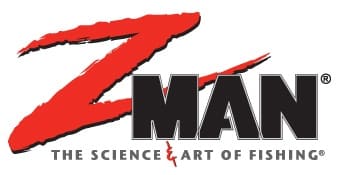Z-Man Wins Judgment in ChatterBait Patent Case
OutdoorHub 07.09.12

A federal judge has ruled that both defendants Renosky Lure, Inc. and Joseph F. Renosky (referred to as “Renosky”) infringed a patent of Z-Man Fishing Products, Inc. (“Z-Man”) by selling fishing lures similar to Z-Man’s ChatterBait brand bladed swim jigs. United States District Judge Richard M. Gergel, in an order dated June 15, 2012, ruled Z-Man’s patent at issue valid and that Z-Man was entitled to partial summary judgment on its patent infringement claims against Renosky.
“We are extremely pleased with the judge’s ruling in this case,” said Z-Man President Jonathan Zucker. “We have gone to great lengths to protect the innovations behind our ChatterBait brand lures, including obtaining two patents. Watching a competitor blatantly copy our patented lure design has been frustrating, and our hope is that the court’s ruling in this case will help deter further copycats.”
In 2006, the ChatterBait brand bladed swim jig burst onto the bass fishing scene and, following several tremendous tournament successes, became a highly-sought-after lure virtually overnight. As word of its effectiveness spread, numerous lure companies copied the breakthrough design of this unique lure. To protect the advancements and technology in its innovative lure design, Z-Man obtained two separate patents: U.S. Patent No. 7,627,978, issued December 8, 2009 (‘978 patent), and U.S. Patent No. 7,726,062, issued June 1, 2010 (‘062 patent).
Nonetheless, in 2010, Renosky began to sell a knock-off lure that was strikingly similar to Z-Man’s ChatterBait lure, and Z-Man was left with little choice other than to file suit. Z-Man sued Renosky on February 22, 2011, alleging claims of patent infringement, trade dress infringement, interference with prospective advantage, unfair competition, breach of contract, and conversion. Subsequently, Z-Man moved for summary judgment on patent infringement and validity.
In essence, the court rejected Renosky’s invalidity arguments and found that Renosky unlawfully infringed the ‘062 patent as a matter of law because Renosky’s knock-off lures could not be distinguished, from a patent perspective, from Z-Man’s baits. Renosky lost on its argument that the eyelet on the Renosky lure was not “fixed within” the jig head as required by the ‘062 patent. The court ruled that “fixed within” does not mean “immovable,” but instead assigned a broader definition of “to make firm, stable, or stationary in or into the interior.” This broad definition helps create a high barrier for those who may attempt a patent “work around” to produce a copycat product.
This court order is the latest in a string of successful enforcement actions either litigated or settled by Z-Man to protect its baits. With this outcome, Z-Man further solidifies the protections offered by its patents and clarifies that the patent covers bladed jigs with eyelets that are both immovable and movable. In addition to its two patents, Z-Man’s intellectual property portfolio relative to its ChatterBait product line includes trade dress registration on its hexagonal-shaped blade and a family of registered “Chatter” trademarks, including ChatterBait and ChatterBlade. Z-Man intends to continue its aggressive policing campaign to actively dissuade other lure companies from violating its well-established intellectual property rights in its ChatterBait product line. Z-Man will litigate as an option, but has resolved many knockoff issues by settling with copycatters on a confidential basis.

